Trend sawblade colour codes explained |
||||||
 |
||||||
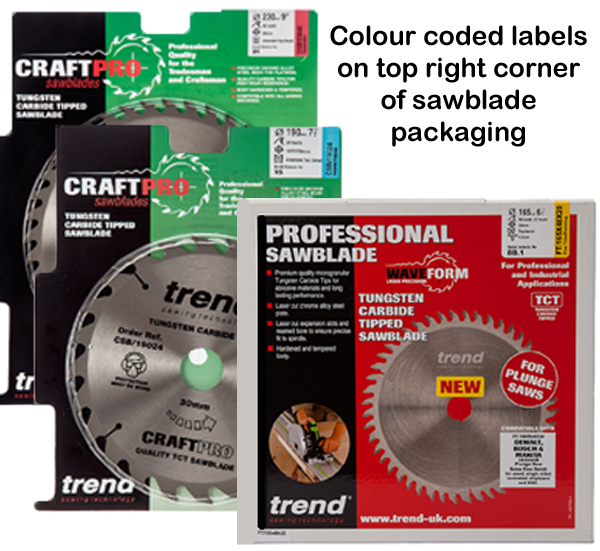 |
All the and produced by Trend are packaged with a specific colour coded label. The colour used will indicate the finish the blade will achieve, and also, the material and type of circular sawing machine can be used with that sawblade. This colour coding allows you to quickly and easily select the correct sawblade for the job. Here we will explain each colour coding relating to saw blades. |
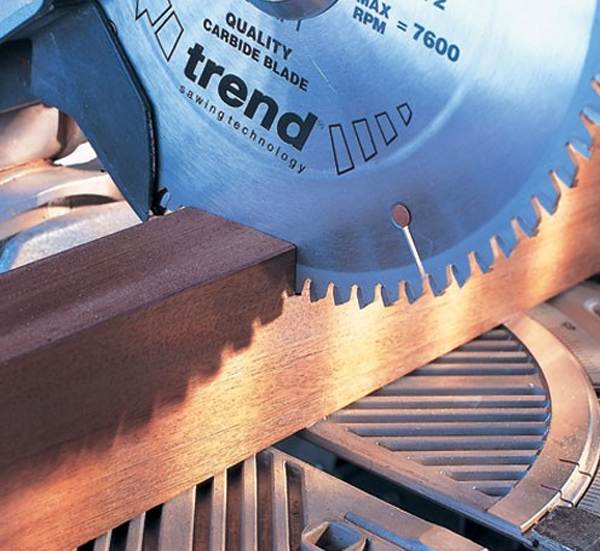 |
||||
|
First, here we will quickly explain the types of cut you may be able to perform with your circular saw. Natural woods have grains which will affect the type of cut you make. A rip cut is a cut made in a piece of wood that follows parallel to the grain, whereas a cross cut cuts wood at a right angle to the grain. Some made-made timbers also have grains, but many don't, this can also affect the type of cut that can be made. |
||||||
Green - Universal rip (RP) |
||||||
 |
Sawblades with green universal rip codes are designed to cut quickly and leave a rough finish. They are designed for making rip cuts in soft and hard woods, exotic woods, and plywoods. |
|||||
Blue - General purpose (GP) |
||||||
|
The general purpose blue sawblades will produce a medium to coarse finish. They are designed to be used for making rip cuts in softwood, hardwood, and exotic wood. They can also be used to cut particle board, MDF, Plasterboard, cement bonded board, and stone fibre board. |
 |
|||||
Red - Combination (CM) |
||||||
 |
Red combination cut circular saw blades will produce a medium finish and is suitable for crosscutting and rip cutting. These blades can be used with MDF, particle board, plywood, soft fibre board, plasterboard, cement bonded board, stone fibre board, exotic wood, and hard and soft wood. |
|||||
 |
||||||
Orange - Trimming / Crosscut (TR) |
||||||
|
Sawblades labelled orange are crosscut and trimming blades. They will make crosscuts in soft and hard woods, and rip or crosscuts in playwood. They will also cut veneers, MDF, particle board, hardboard, chipboard that's laminated on one side, and boards that are veneered o both sides. These blades produce a medium to fine finish. |
 |
|||||
Yellow - Fine trim / Finishing (FT) |
||||||
 |
Yellow labelled saw blades produce an extra fine finish and are designed for trimming and finishing tasks. They will rip or crosscut plywood, and crosscut softwood and hardwood. They are also suitable for use with double-sided veneer board. |
|||||
Purple - Panel Trimming (PT) |
||||||
|
For a super fine finish, you can opt for a purple labelled panel trimming sawblade. They feature a triple chip tooth form with a positive hook. they will produce a professional finish on MDF, particle board, and chipboard with plastic laminate on one side. |
 |
|||||
Grey - Aluminium / Plastic (AP) |
||||||
 |
The sawblades with grey labels are specialist blades that are designed to be used with plastics and non-ferrous metal and alloys. They have a negative hook angle and must be used with a wax lubricant when cutting metal. They will produce a fine finish. | |||||
|
Why not visit Wonkee Donkee Tools and browse our range of circular power saws here |
||||||
 |
||||||
A brief explanation of different cuts you can make in timber |
||||||
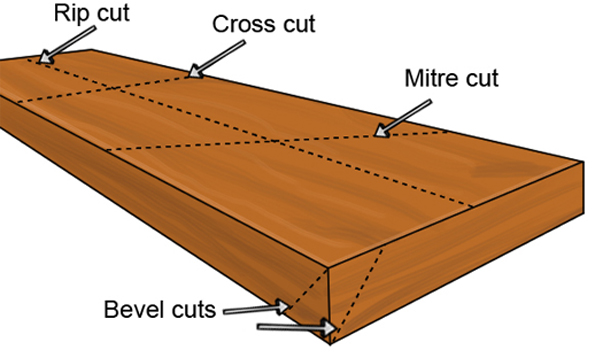 |
In woodworking, especially when working with grained timber, there are a number of cutting options available, some of which are used to create a specific angle for a required joint. The place where the cut is made will be referred to by different names, usually dependant on the angle of the cut relative to the grain of the wood to the end or edge of the timber. |
|||||
Cross cutThis cut is made across the face of the material when the cut runs at a right angle to the grain of the wood, or across the width of the material. |
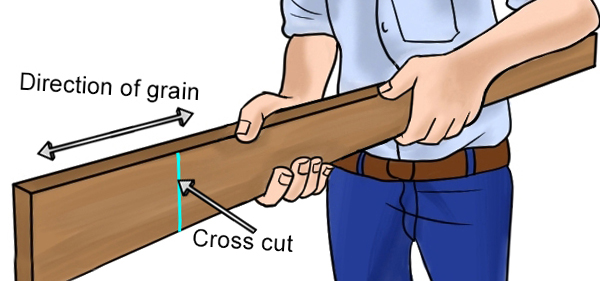 |
|||||
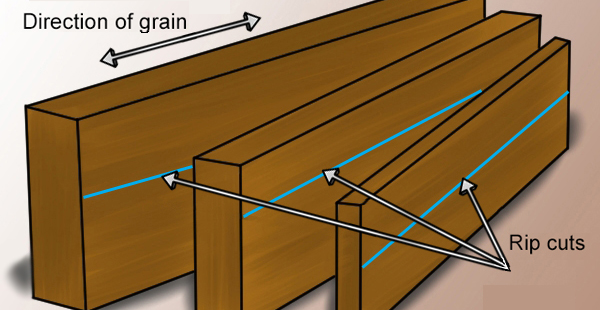 |
Rip cutThis refers to a cut which runs parallel to the grain of the wood, or along the length of the material. |
|||||
Mitre cutA mitre cut is an angled cut on the face of a material. They are typically cuts made in two structures that will be joined to create a corner, which would then be called a mitre joint. A true mitre joint is 90 degrees and requires two pieces to be cut at 45 degrees. However, a mitre joint can also be created from other angles. The angle of the mitre cut will always be half the angle of the finished corner, so 60-degree corners are created with two 30-degree edges. |
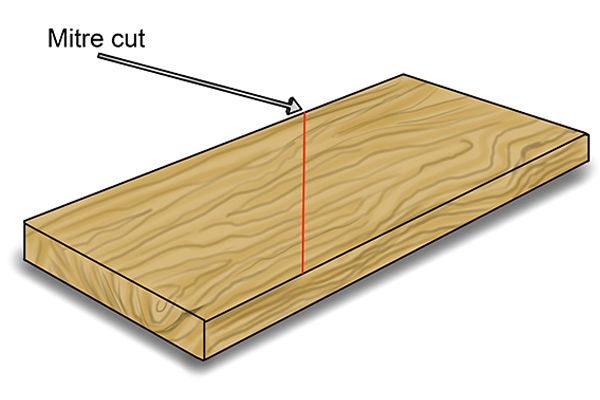 |
|||||
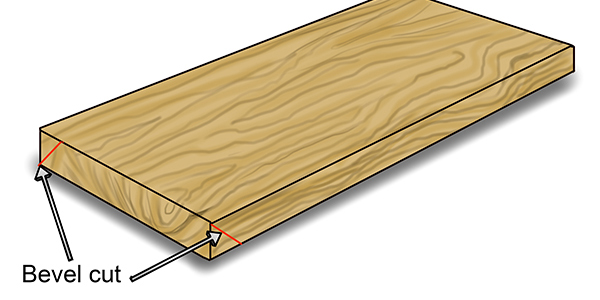 |
Bevel cutThis is an angled cut along the edge or end of the wood. It can sometimes be called an end mitre or edge mitre cut, particularly if the edges will be used to create a corner. |
|||||
Chamfer cutA chamfer is an angled cut made across the corner of a material, to remove the 90-degree edge. It is similar to a bevel cut, but does not extend across the entire profile of the material, instead, it creates a flattened corner, for a profile with a shallow corner. |
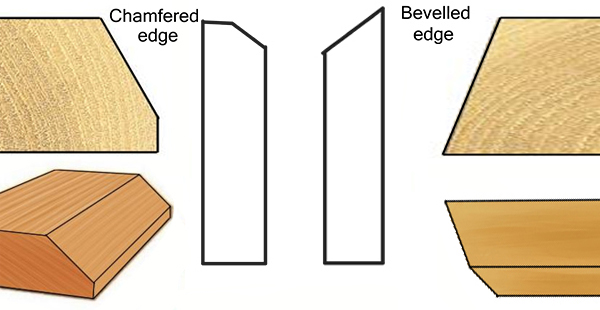 |
|||||
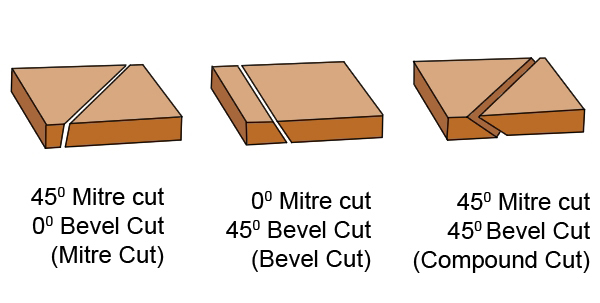 |
Compound cutThis refers to a cut which combines a mitre and a bevel cut, commonly found when fitting decorative mouldings as they usually rest on the wall at an angle and will require some corner joints. |
|||||
 |
||||||







